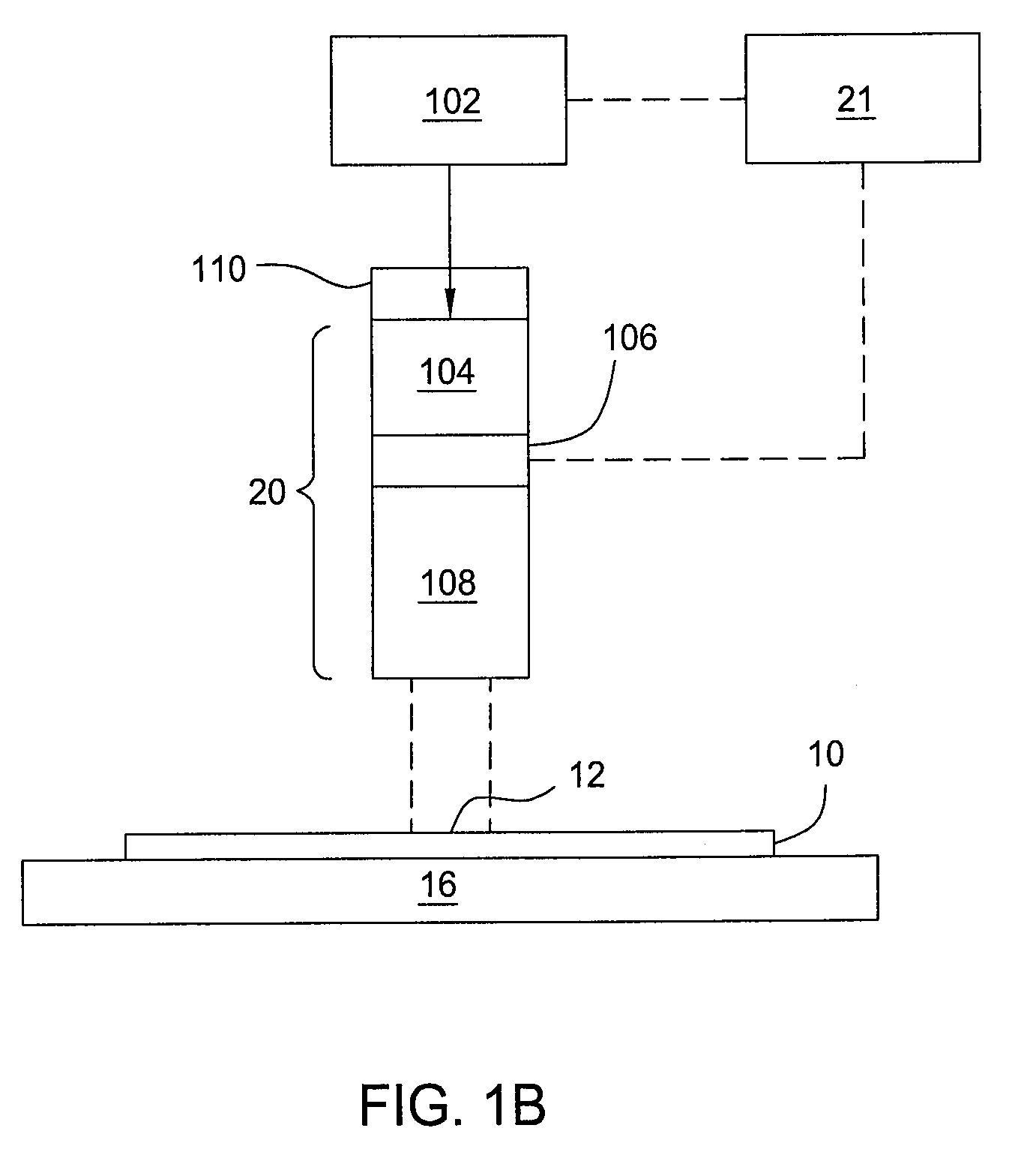Pulse train annealing method and apparatus
- Summary
- Abstract
- Description
- Claims
- Application Information
AI Technical Summary
Benefits of technology
Problems solved by technology
Method used
Image
Examples
examples
[0109]PTA treatment of a 200 Angstrom junction layer would be expected to yield useful results. After implanting with a dose of 1015 dopant atoms at an energy of 250 eV, 1000 pulses of 532 nm laser light may be delivered in a train of pulses. With each pulse delivering an energy density of 0.3 J / cm2, duration of about 1 msec, and separated by a rest duration of 30 msec, sheet resistivity of the junction after annealing is expected to be less than about 400 Ω / cm2. The same instance with implant energy of 500 eV is expected to achieve sheet resistivity after annealing generally less than 200 Ω / cm2.
[0110]For example, after implanting with a dose of 2×1015 boron atoms from an octadecaborane precursor at an energy of 250 eV, PTA treatment was performed with 30 20-nsec. pulses of 532 nm laser light delivered to a substrate at 5 pulses per second, each pulse carrying approximately 150 millijoules (mJ) of energy at a density of 0.234 J / cm2, resulting in resistivity of 537 Ω / cm2 following PT...
PUM
 Login to View More
Login to View More Abstract
Description
Claims
Application Information
 Login to View More
Login to View More - R&D
- Intellectual Property
- Life Sciences
- Materials
- Tech Scout
- Unparalleled Data Quality
- Higher Quality Content
- 60% Fewer Hallucinations
Browse by: Latest US Patents, China's latest patents, Technical Efficacy Thesaurus, Application Domain, Technology Topic, Popular Technical Reports.
© 2025 PatSnap. All rights reserved.Legal|Privacy policy|Modern Slavery Act Transparency Statement|Sitemap|About US| Contact US: help@patsnap.com



